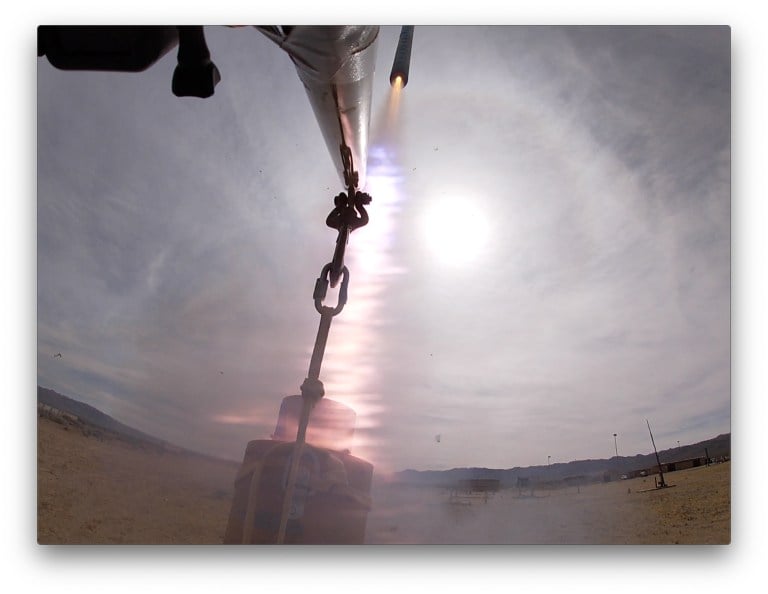The idea of space technology often conjures images of men with 1960s-esque haircuts counting down to the takeoff of a large, several-billion-dollar rocket — not balloons. But balloons are one of the technologies that Project Spaceshot, a group within the Stanford Student Space Initiative (SSI), plans on using to send their rocket into space.
SSI comprises seven teams made up of approximately 300 undergraduate students and several graduate students. SSI teams work on projects with rockets, biology, balloons and policy. Some projects include efforts to launch balloons into the middle of cyclones and to get data on malaria-carrying mosquitos.
Spaceshot
Second-year mechanical engineering masters student Jason Kentner and Julia Thompson ’21 are the co-leads of the Spaceshot team. The group aims to build a rocket that can launch from a balloon and reach a maximum elevation of over 100 km before returning to the ground via parachute.
“The idea of launching a rocket off of a balloon has been done before but it’s pretty rare, it hasn’t really been done since the ’50s or ’60s,” Kentner said. “We want to get to 100 km, considered the edge of space, and if you want to get there and launch from the ground you have to use a really big rocket because you’re pushing through the Earth’s atmosphere just to get up to altitude.”
“By using a balloon to get up to 29 km you’re above 99% of earth’s atmosphere already,” he added, “so you don’t have as much atmosphere drag and can use a much smaller rocket.”
Last spring, a student group from the University of Southern California became the first college team to launch a rocket that reached the 100-km-high Kármán line, using a more conventional ground-launched rocket.
“A really big rocket motor like that would be extremely expensive,” Thompson said. “This [the SSI] system in total should cost around $5,000 which is pretty much unheard of for a project that actually reaches space.”
A Nov. 2 test launch in the Mojave Desert will test out the finless stability systems, motor ignition system and parachute system.
Cycloon and balloons
Critics of investing in space technology sometimes argue that resources would be better spent on addressing terrestrial issues like climate change or poverty.
But Thompson contends, “Space is actually a way of investing in solving Earth’s problems.”
SSI’s balloon projects aim to use space technology to address issues related to the climate crisis on earth. Project Cycloon, expected to launch later this month, plans to fly balloons into weather systems like cyclones to gather data — hence the origin of the project name.
“The idea there is to launch balloons and fly them into hurricanes or tropical cyclones so we can gather data on those storms as they’re forming and improve forecasting,” Kentner said. “Right now the way we collect data on storms is to take an Air Force Hurricane Hunter plane and fly it into a hurricane with people on board throwing these little transmitters outside the window, which is both very expensive and potentially dangerous.”
“A balloon can go to higher altitudes than a plane,” Kentner added. “A balloon would be able to get that data while the hurricane is still out over the open ocean and actually be able to characterize higher levels of wind and forecast more accurately.”
Each quarter SSI picks a new balloons project with the aim of doing “social good.” This fall SSI has chosen to use balloon technology to gather data on malaria-carrying mosquitoes. Mosquitoes use high-altitude wind currents to travel from one place to another — a behavior that helps malaria spread — effectively shutting down their bodies and hibernating and then suddenly showing up hundreds of miles away.
“There are places in West Africa and Mali where mosquitoes just show up at the change of the seasons,” Kentner said.
The balloons team this quarter will carry mosquitoes to high altitudes on balloons, seeking to learn information and patterns on the spread of malaria.
A previous version of this article incorrectly stated that the test launch on Nov. 2 will test the fin stability systems. The Nov. 2 test will test the finless stability system. A previous version also incorrectly stated that the ballons team has carried mosquitoes. The ballon team will carry mosquitos; their first launch is planned for October or early November. The Daily regrets these errors.
Contact Vionna Atefi at vionnaa ‘at’ stanford.edu.
